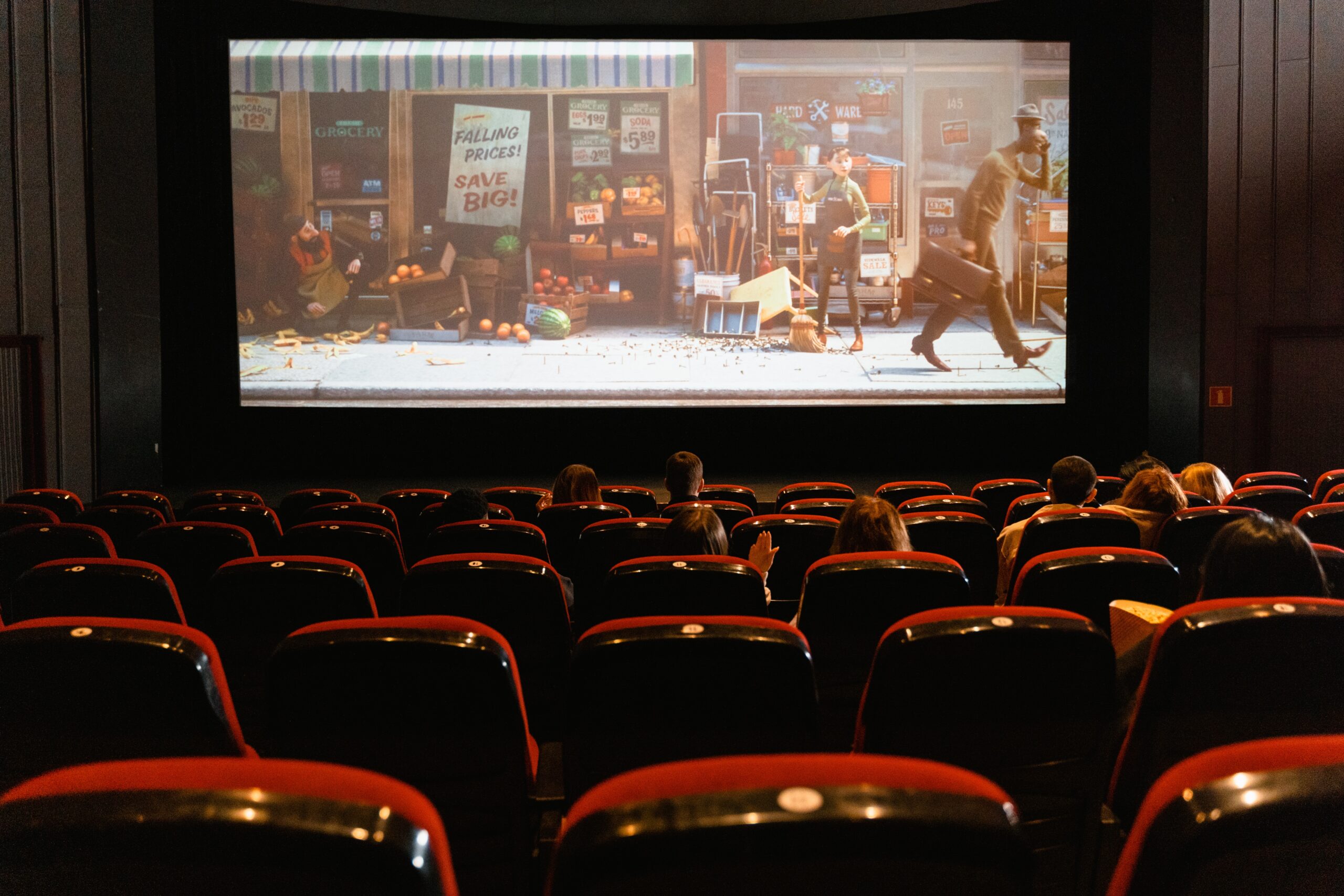Introduction
Music is a universal language, and in the world of film and television, it plays a pivotal role in shaping the viewer’s emotional journey and enhancing storytelling. From the dramatic symphonies of Hans Zimmer to the iconic themes of John Williams, music producers are the unsung heroes behind the scenes, working tirelessly to create the perfect soundtrack.
Music producers in the film and television industry are responsible for creating and curating the sonic landscape of a production. They work closely with directors, producers, and sound designers to ensure that the music enhances the narrative and engages the audience. A music producer’s role extends beyond composing; it includes arranging, orchestrating, recording, mixing, and more. They are instrumental in turning a vision into a reality, making them indispensable collaborators in the entertainment world.
In this comprehensive guide, we will explore the intricate art of music production for film and television, shedding light on the creative process, challenges, and the industry’s evolving landscape.
Understanding the Role of a Music Producer
Definition and Responsibilities
Music producers in film and television are multifaceted professionals who oversee the entire musical aspect of a project. They work closely with directors and producers to understand the vision and mood of the project, translating it into musical language. As highlighted by Emmy-winning music producer Gary Lionelli – “Our job is to amplify emotions and help tell the story.” This involves composing, arranging, recording, and mixing music to fit seamlessly into the narrative.
Collaborative Nature
The collaborative nature of music production cannot be overstated. Directors, producers, sound designers, and editors rely on music producers to provide the sonic backbone of a production. This collaboration extends to spotting sessions, where the team discusses where music should be placed, and what emotions it should evoke. John Powell, renowned for his work on the “How to Train Your Dragon” series, emphasizes the importance of collaboration, stating, “It’s all about communication and teamwork.”
The Creative Process in Music Production for Film and Television
Initial Concept and Briefing
Every project begins with a briefing, where the director and producer outline their vision and expectations for the music. This initial concept serves as a roadmap for the music producer, helping them understand the tone, style, and overall direction of the soundtrack. For instance, when Quentin Tarantino and Ennio Morricone collaborated on “The Hateful Eight,” the initial concept was to create a score that was both haunting and memorable, fitting the film’s unique blend of suspense and violence.
Composing the Score
Composing is the heart of music production, and it involves creating original music that complements the visuals and narrative. Legendary composer John Williams, famous for scoring “Star Wars” and “Jurassic Park,” is a master at crafting iconic themes that become synonymous with the films themselves. His ability to create music that resonates with audiences and enhances the storytelling is a testament to the power of composition in film and television.
Arranging and Orchestrating
Arranging and orchestrating involve expanding upon the composer’s ideas and turning them into full-fledged musical pieces. This process often requires collaboration with orchestras, musicians, and arrangers to bring the music to life. For instance, the lush and emotionally charged orchestration in “The Lord of the Rings” trilogy, by composer Howard Shore, played a pivotal role in immersing audiences in the fantastical world of Middle-earth.
Recording and Producing
Once the music is composed and arranged, it’s time for the recording and production phase. Music producers work closely with recording engineers and musicians to capture the desired sound. The recording studio becomes a creative space where the magic of the music comes to life. An excellent example of this is the recording of the iconic “Pink Panther” theme by Henry Mancini, where the playful saxophone melody was meticulously crafted to fit the mischievous character of Inspector Clouseau.
Editing and Mixing
Editing and mixing are crucial steps in the music production process. Music producers ensure that the music syncs perfectly with the visuals, and they use mixing techniques to balance various elements within the soundtrack. The use of sound effects and dialogue alongside the music requires precision and attention to detail. Christopher Nolan’s collaboration with Hans Zimmer in “Dunkirk” showcases the importance of seamless editing and mixing, where the soundtrack becomes a central character in the film, enhancing tension and urgency.
Finalizing the Soundtrack
The finalization phase involves polishing and fine-tuning the soundtrack. Music producers ensure that the music seamlessly integrates with the final edit of the film or television episode. This stage may also involve re-recording certain sections or making last-minute adjustments to enhance the emotional impact. The success of Trent Reznor and Atticus Ross’s work on “The Social Network” soundtrack demonstrates how meticulous finalization can elevate a film’s overall experience.

Collaboration and Communication
Working with Directors and Producers
Effective communication with directors and producers is vital for music producers. They must understand the director’s vision, preferences, and expectations while offering creative input. A prime example of this collaboration is the partnership between director David Fincher and composers Trent Reznor and Atticus Ross. Their ongoing collaboration, which began with “The Social Network,” illustrates how trust and communication lead to exceptional soundtracks that complement Fincher’s distinctive style.
Coordinating with Sound Designers and Engineers
Music producers also collaborate closely with sound designers and engineers to ensure a harmonious blend of music and sound effects. In action-packed scenes, such as those in “Mad Max: Fury Road,” the coordination between music, sound design, and engineering is critical to creating a visceral and immersive experience for the audience.
The Importance of Effective Communication
Clear and effective communication is the linchpin of a successful collaboration. Misunderstandings can lead to misaligned creative goals and, ultimately, a less impactful soundtrack. As highlighted by composer Michael Giacchino, known for his work on the “Lost” TV series and numerous Pixar films, “Communication is key; it’s more than half the job.” Open dialogue between all parties involved ensures that the music enhances the story rather than detracting from it.
Genre and Mood Considerations
Adapting Music to Fit Different Genres
Music producers must be versatile and adapt their approach to suit various genres. Whether it’s the grand orchestral compositions of a fantasy epic or the electronic beats of a sci-fi thriller, the genre greatly influences the musical choices. A prime example of genre adaptation is the soundtrack for “Blade Runner 2049,” composed by Hans Zimmer and Benjamin Wallfisch. They drew inspiration from Vangelis’s original score but incorporated modern elements to create a soundscape that fit the futuristic dystopian world of the film.
Creating Emotional Impact through Music
Music has the power to elicit strong emotions in the audience. It can heighten suspense, evoke nostalgia, or inspire hope. A poignant example is the use of the “Requiem for a Dream” theme by Clint Mansell in Darren Aronofsky’s film. The haunting and emotionally charged music amplifies the characters’ struggles and despair, leaving a lasting impact on viewers.
Case Studies of Successful Soundtracks
Examining successful soundtracks can provide valuable insights into the power of music in film and television. The iconic “Jaws” theme, composed by John Williams, exemplifies how a simple melody can create intense suspense and fear. Similarly, the use of pop songs in Quentin Tarantino’s films, such as “Pulp Fiction” and “Kill Bill,” demonstrates how carefully chosen music can become inseparable from the cinematic experience.
Checkout: Music Production for Podcasts and YouTube Videos
Music Licensing and Copyright
Clearing Rights for Existing Songs
In some cases, filmmakers choose to use existing songs in their projects. Music producers must navigate the complex world of music licensing to obtain the rights to these songs. This process involves negotiations with artists, publishers, and record labels. The success of “Guardians of the Galaxy” in integrating a mix of iconic ’70s and ’80s songs into the narrative showcases the importance of securing the right music licenses.
Composing Original Music and Licensing
Original music composition also involves copyright considerations. Composers and music producers must ensure that their work adheres to copyright laws and is properly registered. Failing to do so can lead to legal issues down the line. The original score for “Inception,” composed by Hans Zimmer, required meticulous licensing and copyright management to protect the intricate layers of music created for the film.
Legal Considerations and Contracts
Legal expertise is essential in navigating the complex world of music licensing and copyright. Contracts outlining the rights and royalties must be meticulously drafted to protect the interests of all parties involved. Music producers often collaborate with legal experts to ensure that all legal considerations are addressed. The legal battle over the rights to the “Friday the 13th” franchise and its iconic music serves as a cautionary tale of the legal complexities in the industry.
Technology in Music Production
Digital Audio Workstations (DAWs) and Software
Advancements in technology have revolutionized music production. Digital Audio Workstations (DAWs) like Pro Tools, Logic Pro, and Ableton Live have become indispensable tools for music producers. These software platforms offer a wide range of virtual instruments and effects, streamlining the composition and production process. Hans Zimmer’s use of DAWs for the “Dunkirk” score showcases how technology can enhance the creative process.
Sample Libraries and Virtual Instruments
Sample libraries and virtual instruments allow composers and music producers to access a vast array of sounds and instruments without the need for physical recordings. Composers like Ramin Djawadi, known for his work on “Game of Thrones,” utilize virtual instruments to create epic soundtracks that transport audiences to fantasy realms.
Sound Design and Foley Effects
Sound design is another critical aspect of music production, especially in genres like science fiction and fantasy. Music producers often collaborate with sound designers and foley artists to create unique sonic landscapes. The intricate sound design in “Interstellar,” scored by Hans Zimmer, immerses viewers in the vastness of space and time, enhancing the overall cinematic experience.
Checkout: Music Mastering Tips & Techniques
Budgeting and Resource Management
Estimating Costs for Music Production
Budgeting is a crucial aspect of music production. Music producers must estimate the costs associated with composing, arranging, recording, and mixing music. This includes fees for musicians, studio time, equipment, and post-production expenses. Staying within budget while delivering exceptional quality is a challenging task.
Allocating Resources Wisely
Resource management involves making strategic decisions about where and how to allocate resources. A case in point is the production of “Moonlight,” where composer Nicholas Britell had to work with limited resources to create a minimalist yet emotionally resonant score. Wise resource allocation allowed the music to shine without exceeding the film’s modest budget.
Tips for Staying on Budget
Staying on budget requires careful planning and negotiation. Music producers often find creative solutions to achieve the desired musical quality without breaking the bank. Collaborative partnerships with musicians, efficient use of studio time, and judicious selection of virtual instruments are strategies employed by music producers to maximize resources.
Challenges and Problem Solving
Overcoming Creative Blocks
Creative blocks can be a significant challenge for music producers. Deadlines, high expectations, or simply a lack of inspiration can hinder the creative process. Overcoming these blocks often involves experimentation, collaboration, and sometimes even stepping away from the project temporarily. The story of how Thomas Newman overcame creative challenges while scoring “American Beauty” exemplifies the resilience required in the industry.
Dealing with Tight Deadlines
Tight deadlines are common in the film and television industry. Music producers must adapt to these constraints while maintaining the quality of their work. Composers like Danny Elfman, known for his work on Tim Burton’s films, have mastered the art of composing under tight deadlines, delivering memorable and evocative scores.
Addressing Technical Issues
Technical issues can disrupt the music production process. Whether it’s a malfunctioning instrument or a software glitch, music producers must be adept at troubleshooting and finding solutions quickly. The production of the animated film “Coco,” with its intricate guitar-centric score, required technical precision and expertise to achieve the desired sound.
Trends and Innovations in Music Production for Film and Television
The Impact of Streaming Services
The rise of streaming services has transformed the way music is composed and consumed in film and television. With the advent of platforms like Netflix and Amazon Prime Video, composers and music producers have more opportunities to create diverse soundtracks that cater to global audiences. The success of “Stranger Things,” with its synth-heavy score by Kyle Dixon and Michael Stein, highlights how streaming platforms have embraced unique musical styles.
New Techniques and Technologies
Advancements in audio technology, such as immersive sound formats like Dolby Atmos, have opened up new possibilities for music production. Composers and music producers are exploring innovative techniques to create immersive and three-dimensional soundscapes. The use of Dolby Atmos in films like “Gravity” and “A Quiet Place” demonstrates how technology can enhance the auditory experience.
Emerging Trends in Soundtracks
Emerging trends in soundtracks include the fusion of traditional and electronic elements, experimental approaches to composition, and a greater emphasis on diversity and representation in music production. The soundtrack of “Black Panther,” composed by Ludwig Göransson, incorporates African influences and rhythms, setting a new standard for cultural diversity in film scores.
Checkout: Live Sound Engineering for Music Producers
Conclusion
In the ever-evolving world of music production for film and television, music producers continue to push creative boundaries, enhance storytelling, and captivate audiences with their sonic craftsmanship. From composing memorable themes to navigating complex licensing agreements, their role is indispensable in the cinematic and televisual landscape.
As technology advances and new trends emerge, music production remains a dynamic and essential element of visual storytelling. The magic of music in film and television endures, enriching our viewing experiences and leaving an indelible mark on our memories. So, the next time






